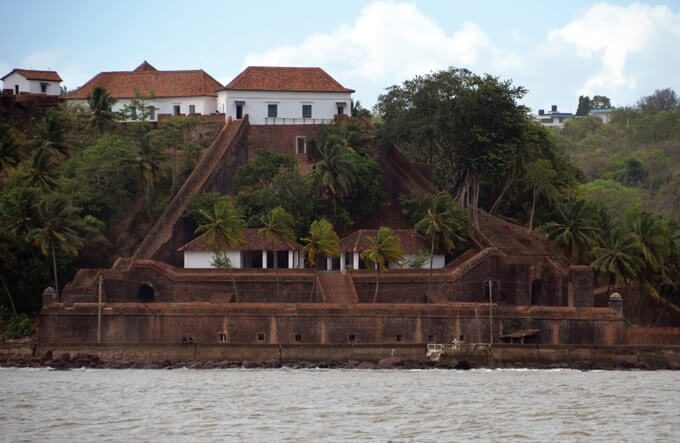Located on the north bank of the Mandovi River and steeped in 400 years of history, is the oldest fort in Goa – the Reis Magos Fort. The word, Reis Margos in Portuguese, means ‘three wise men.’ Located at the foot of the fort is a church dedicated to the three wise men of the Bible. Both, the church and the fort, are very beautiful.
In 2012, the fort was completely restored to its original grandeur and thrown open to the public. You can now even hire the premises for private events such as weddings and parties. Imagine celebrating your wedding in a location of such historical importance.
An integral part of Goan history that dates back to 1493
It began as a small military outpost in 1493. When Goa was ruled by the Sultan of Bijapur – Yusuf Adil Shah. Although it was a small little outpost it had very strategic importance. It happened to reach out into the narrowest point of the Mandovi river. As a result, it was a great place to monitor and control the movement of boats on the river.
When Afonso de Albuquerque attacked and conquered Goa in 1510, he made a special note of the strategic importance of this small outpost. It had given him much trouble during his conquest. He made up his mind to exploit its location and turn it into a full-fledged fortress. From 1551-1554, during the viceroyalty of D. Afonso de Noronha, the Reis Magos Fort and church was built at this same location – on a steep slope of land, just above the old outpost. From its perch up there, it could curb any ships from crossing through the Mandovi.
Excellent design…a true fortress.
A walled corridor connects the main fortress with the river anchorage. A passage connects the rooms which run along the river. The high walls are topped at vantage points by cylindrical watch turrets. Additionally, the fort had a perennial source of water from a freshwater spring located nearby. That’s what made it an excellent fortress.
Later, in 1595, the Portuguese built another fortification on the opposite bank of the Mandovi river on a piece of land that belonged to a nobleman named Gaspar Dias. Ships caught in the crossfire from these two fortresses, could not escape.
As time passed, the Dutch ships began to make daring ventures into the Mandovi River in spite of these fortresses. Somehow their forays could not be thwarted. So the Portuguese decided to build Fort Aguada at the mouth of the Mandovi, and another Fort (Cabo) at Mormugao.
The Reis Margos fort, however, continued to serve as a powerful fortress. In fact, during the Maratha incursion of 1739, Reis Magos managed to hold valiantly even though the whole of the Bardez province was occupied by the Bhonsles. The Bhonsles were forced to retreat to Pernem only in 1741
A forgotten fortress… then restored
From 1798 to 1813, British troops occupied Goa to protect it from possible French attacks, during the Napoleonic wars. Then in 1808, the British Government in India signed an agreement with the Portuguese and the fort became a lodge for British soldiers who stayed here till as late as 1812. By the 19th Century, Goa’s capital shifted to Panjim. Naval threats to goa reduced and so the Fort was largely forgotten. In 1900, was converted into a jail. Many of India’s freedom fighters were locked away here. By 1961, when Goa was liberated from Portuguese rule, the forgotten Reis Magos Fort began to fall to ruins.
In 2007, a tripartite agreement was signed between the Govt of Goa, INTACH and the Hamlyn Trust to restore and the fort as a Cultural Centre. The Fort was fully restored under the skilled hands of a renowned Goan Architect named Gerad da Cunha and thrown open to the public on 5th June 2012.
Today, the restored fort can be rented out for weddings, parties, music shows and exhibitions. For rental rates see: http://reismagosfort.com/rental.html
To get a look at what the fort was like before and after restoration, click here: http://reismagosfort.com/restoration.html



Info source and videos: http://www.reismagos.com
itsGoa/Oct/TD


